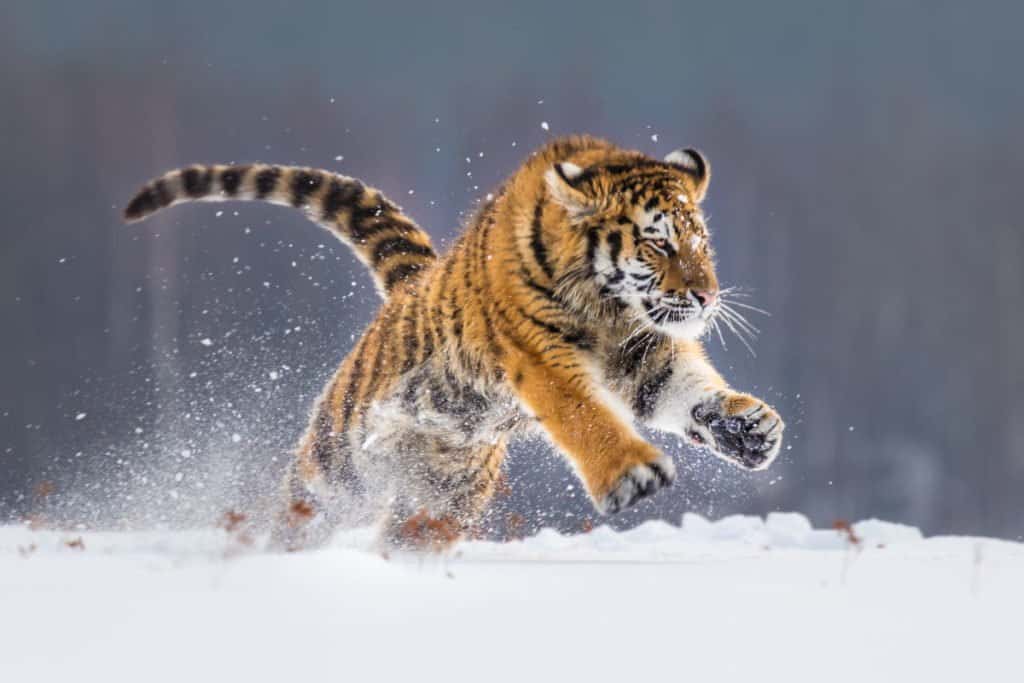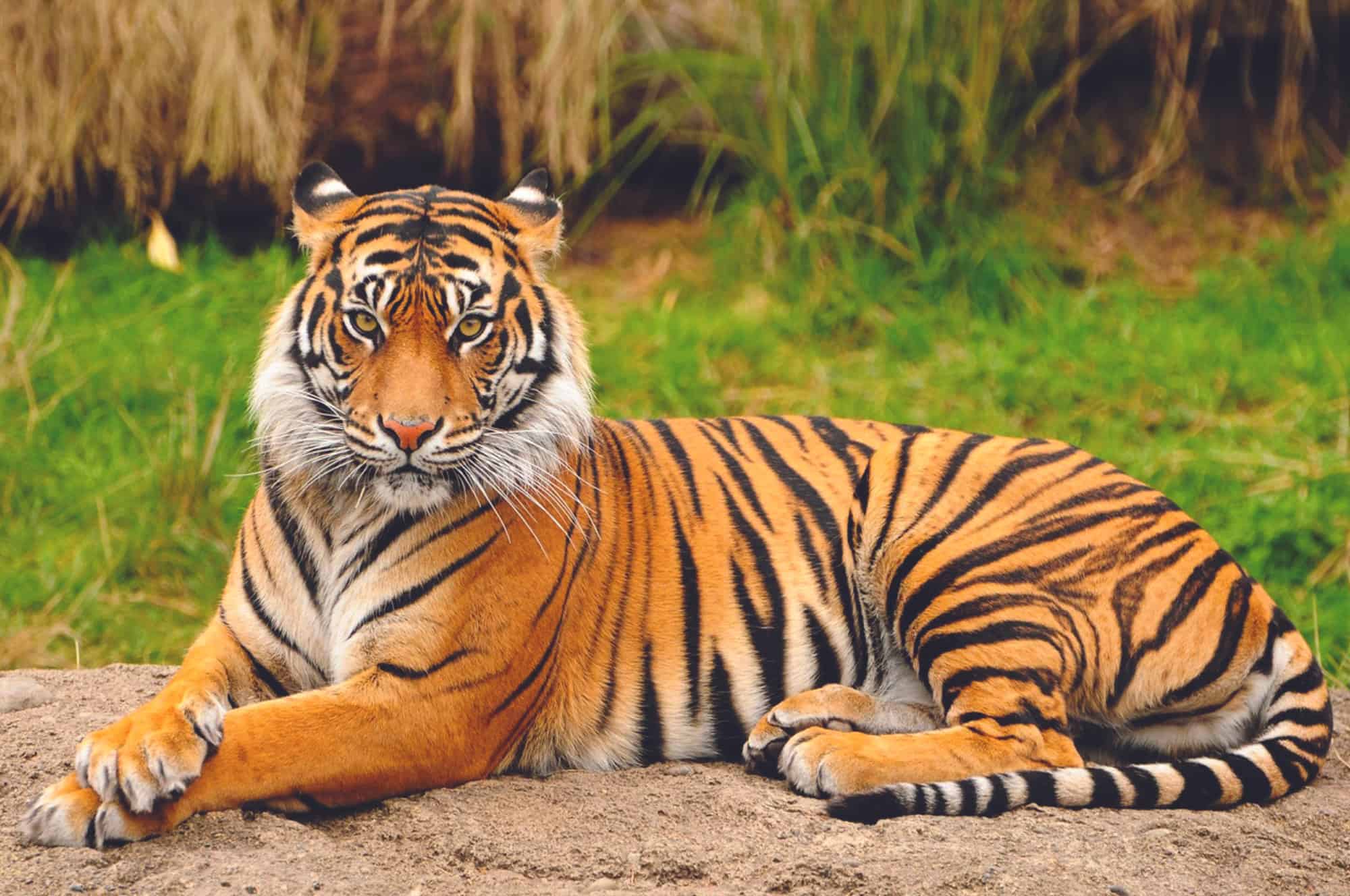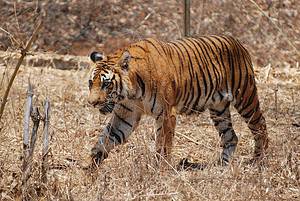Tigers are the largest of the big cats that roam the planet today. They are far bigger than lions, leopards, and jaguars. Within the tiger species are subspecies that grow even larger than usual, such as the Siberian tiger. The largest tiger weighed as much as a horse, but the tiger had an unusual combination of factors that allowed it to grow so large. Explore the influences on this tiger that allowed it to reach such an enormous size!

The largest tiger ever recorded was a Siberian tiger named Jaipur, and he measured 10 feet 11 inches long and weighed 932 pounds when he was fully grown. That means the tiger was comparable to horses by two measures: length and weight.
The average riding horse weighs between 800 and 1,200 pounds. That means Jaipur would have weighed more than some horses at his greatest weight. Also, the average length of a horse is about 8 feet to 9 feet long. However, Jaipur reached an impressive 10 feet 11 inches in length from nose to tail.
Jaipur was an impressive tiger specimen. Yet, this male tiger’s life was unusual in many ways. He had the right combination of factors that allowed him to weigh as much as a horse, including his habitat and diet.
3 Reasons the Largest Tiger Weighed as Much as a Horse

The right combination of food, genetics, and living conditions allowed Jaipur to get very large.
©Jan Stria/Shutterstock.com
The largest tiger weighed as much as a horse because he was a member of the largest tiger subspecies, received all his food from humans, and did not expend copious amounts of energy hunting. These three factors allowed Jaipur to reach its amazing stature. Take a look at each factor and see how they contributed to his immense size.
1. The Tiger Belonged to the Siberian Tiger Subspecies
The first reason that Jaipur reached such an amazing size is that he was a Siberian tiger. The Siberian tiger, also called the Amur tiger, is the largest subspecies of Panthera tigris.
The average member of this subspecies can reach between 220 and 770 pounds in the wild. However, Jaipur was a captive tiger that did not have to deal with hunting for food in the wild or burning energy and losing weight. So, he was able to grow about as large as any tiger could.
Meanwhile, the average tiger weighs between 500 and 660 pounds. If Jaipur had been any other subspecies, he still may not have reached such a large size. So, genetics set the stage for this tiger to reach a massive size. That was not the only factor in this case, though.
2. Jaipur Was Provided with a Great Diet in Captivity
A lack of prey is one of the greatest threats to the dwindling Siberian tiger population in the world today along with poaching and habitat loss. Male Siberian tigers have massive ranges that can reach up to 700 square miles! Instead of having to hunt for food sources that are disappearing, like elk, boar, and other large mammals, Jaipur had all his food delivered directly to him.
Since Jaipur never went hungry because he was owned by an American animal trainer: Joan Myron Marasek. Therefore, he was able to continually grow and become heavier. That is one of the greatest reasons that the largest tiger weighed as much as a horse. By the time he was 9 years old, Jaipur had reached his great weight of 932 pounds.
3. The Largest Tiger Never Had to Burn Calories While Hunting
One of the reasons that few Siberian tigers reach the same weight and length as Jaipur is that they have to roam huge distances to find food. Tigers lose a great deal of weight while they hunt for their next meal. Jaipur never faced such a challenge because all his food was delivered right to his enclosure. So, instead of losing weight between meals, he was able to retain his size and gain weight.
Together, these three factors allowed him to grow into the largest tiger that weighed as much as a horse!
Siberian Tiger Populations Are Shrinking

Bengal tigers could become the largest subspecies due to challenges facing Siberian tigers in the wild.
©iStock.com/Thinker360
Siberian tiger populations are shrinking in two ways. First, the population of Siberian tigers is getting smaller as humans continually hunt the creatures while they are dealing with habitat loss and losing access to their food sources. Currently, an estimated 400 members of the subspecies live in the wild, and hundreds more of them live in zoos around the world.
Roughly 150 of these tigers live in North America where they are kept in zoos. This attempt at conservation and breeding could help the subspecies of tigers be reintroduced to the wild one day. Yet, such a lofty goal seems far off when dealing with such small numbers of animals.
Only 13,000 tigers are left in the world today. Roughly 5,000 tigers live in the wild while the other 8,000 live in captivity, usually in zoos. However, some tigers are kept as exotic pets by private owners as well. This practice can be harmful to the tigers, and it can lead to dangerous situations, including when the animals escape or their owners turn them loose. The latter happened in 2011 in Zanesville, Ohio, resulting in 18 tigers and 17 lions roaming a large property.
The second way that Siberian tigers are shrinking is more literal. Some species of tigers are not growing as large because of stress stemming from environmental changes. That means massive tigers like Jaipur are going to become even rarer in the future. In fact, Bengal tigers could become the largest subspecies due to challenges facing Siberian tigers in the wild.
The largest tiger weighed as much as a horse because he had access to the right food, was a member of the largest subspecies, and did not have to burn his energy in pursuit of food. These factors set him up for success as far as being the heaviest tiger on record.
Still, members of Jaipur’s subspecies are suffering these days. Only a few hundred Siberian tigers live in the wild, and they could face even more challenges ahead. Although humans have put conservation efforts in place, they may not bear fruit in a world that continues to be hostile toward large apex predators.
Where Is Zanesville, Ohio, Located on a Map?
Zanesville is a city in, and the county seat of, Muskingum County. It is located where the Licking and Muskingum rivers meet. Zanesville is about 52 miles straight east of Columbus, the state capital, on Interstate 70.
The photo featured at the top of this post is © Gerckens-Photo-Hamburg/Shutterstock.com
Thank you for reading! Have some feedback for us? Contact the AZ Animals editorial team.






